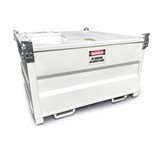Company researchers plan to outline key ways Ford is leveraging nanoparticles to improve automotive materials during the 2008 SAE World Congress in Detroit.
"Industry is becoming more efficient at creating nanoparticles," said Matthew Zaluzec, manager of the Materials Science & Nanotechnology Department for Ford Research and Advanced Engineering. "Our challenge is to take those nanoparticles, separate them and disperse them into existing materials in a way that makes our vehicles lighter, more durable, and more fuel efficient."
Ford has called out vehicle weight reduction as a key part of its strategy to improve fuel economy by 40 percent by 2020. The goal is reduce vehicle weight from 250 to 750 pounds -- depending on the model -- between 2012 and 2020 without compromising safety.
Ford powertrains already are benefiting from the company's grasp of nanotechnology and mircomechanical properties. A Ford study dubbed "Atoms to Engines" looked at the structure of cast aluminum alloys at near atomic levels. From this work, a detailed analysis of the structure/property/process relationship of the aluminum alloy engine blocks has led to reduced engine weight and, in turn, increased fuel efficiency.
"Many thought our aluminum engine technology was mature and fully optimized," Zaluzec said. "Not until we looked at every aspect of the materials and manufacturing process were we able to pull out another 10 percent in structural performance out of our engines, which directly translates into weight and fuel economy savings year over year. It's nano at the working level."
Ford's European research lab in Aachen, Germany, is developing a thermally sprayed nano-coating that could replace the heavier cast iron liners that provide the necessary wear resistance of cylinder bores in aluminum block engines. Presented at this year's SAE World Congress, this thin wear-resistant coating reduces weight and improves friction performance while delivering equal durability and reliability to the product.
Coatings in the way of vehicle exterior paint can benefit from Ford's nano-knowledge, too. Researchers are evaluating advanced surface coating applications that could enhance paint adhesion, appearance and durability.
"We want to take paint beyond what our customers are used to seeing on a vehicle," Zaluzec said. "We constantly ask questions like, can I change the functionality of a paint layer to give a unique appearance, to control heat dissipation or improve durability beyond what we've achieved to date?"
Nanotechnology is also being tapped by Ford scientists to help develop smarter solutions for energy storage issues for alternative power sources such as lithium-ion batteries and fuel cells.
Nanotechnology holds great promise in the auto industry. By 2015, experts predict nanomaterials will reach 70 percent usage in automotive applications.
- Suppliers
- New to IndustrySearch? Book a Demo
- Advertise with us
- Login
- Email Marketing
- Buyers
- Get Quotes
- Articles & Ideas
- Login
- Subscribe to newsletter
- My Details
- Get Quotes
- Automation & Control
- Automotive Workshop Equipment
- Commercial Cleaning Equipment & Supplies
- Construction Equipment & Heavy Machinery
- Conveyor Systems & Components
- Electrical & Power Generation Equipment
- Electronic Components
- Farming & Agriculture
- Food & Beverage Processing
- Forklifts & Forklift Attachments
- Hydraulic & Pneumatic Equipment
- Industrial Materials, Tools & Components
- Industrial Pumps
- IT Hardware & Industrial Computing
- IT Software & Applications
- Laboratory Equipment & Instruments
- Manufacturing & Industrial Equipment
- Material Handling & Lifting Equipment
- Metalworking & Machining
- Mining Equipment & Machinery
- Packaging & Labelling Machinery
- Pallet Handling Equipment
- Personal Protective Equipment
- Security & Surveillance
- Test & Measurement
- Transport & Logistic Equipment
- Warehouse Storage, Shelving & Racking
- Waste Treatment & Environmental Management
- Welding Machines & Accessories
- Woodworking & Joinery Machines
- Workplace Equipment
- Workplace Safety Equipment
- Get Quotes
- Automation & Control
- Automotive Workshop Equipment
- Commercial Cleaning Equipment & Supplies
- Construction Equipment & Heavy Machinery
- Conveyor Systems & Components
- Electrical & Power Generation Equipment
- Electronic Components
- Farming & Agriculture
- Food & Beverage Processing
- Forklifts & Forklift Attachments
- Hydraulic & Pneumatic Equipment
- Industrial Materials, Tools & Components
- Industrial Pumps
- IT Hardware & Industrial Computing
- IT Software & Applications
- Laboratory Equipment & Instruments
- Manufacturing & Industrial Equipment
- Material Handling & Lifting Equipment
- Metalworking & Machining
- Mining Equipment & Machinery
- Packaging & Labelling Machinery
- Pallet Handling Equipment
- Personal Protective Equipment
- Security & Surveillance
- Test & Measurement
- Transport & Logistic Equipment
- Warehouse Storage, Shelving & Racking
- Waste Treatment & Environmental Management
- Welding Machines & Accessories
- Woodworking & Joinery Machines
- Workplace Equipment
- Workplace Safety Equipment
Trusted by 1,000,000+ Australian industrial buyers
Buyers
- Discover products & solutions
- Login
- Subscribe To Newsletter
- Browse All Products
- Read Articles
Suppliers
Advertise
- Promote your products & solutions
- New to IndustrySearch? Book a Demo
- Login / Forgot Password
- Advertise Your Products
- Success Stories
- Email Marketing
- Suppliers
- Advertise with us
- Login
- Email Marketing
- Buyers
- Get Quotes
- Articles & Ideas
- Login
- Subscribe to newsletter
- My Details
Get Quotes
- Automation & Control
- Automotive Workshop Equipment
- Commercial Cleaning Equipment & Supplies
- Construction Equipment & Heavy Machinery
- Conveyor Systems & Components
- Electrical & Power Generation Equipment
- Electronic Components
- Farming & Agriculture
- Food & Beverage Processing
- Forklifts & Forklift Attachments
- Hydraulic & Pneumatic Equipment
- Industrial Materials, Tools & Components
- Industrial Pumps
- IT Hardware & Industrial Computing
- IT Software & Applications
- Laboratory Equipment & Instruments
- Manufacturing & Industrial Equipment
- Material Handling & Lifting Equipment
- Metalworking & Machining
- Mining Equipment & Machinery
- Packaging & Labelling Machinery
- Pallet Handling Equipment
- Personal Protective Equipment
- Security & Surveillance
- Test & Measurement
- Transport & Logistic Equipment
- Warehouse Storage, Shelving & Racking
- Waste Treatment & Environmental Management
- Welding Machines & Accessories
- Woodworking & Joinery Machines
- Workplace Equipment
- Workplace Safety Equipment
Get Quotes
- Automation & Control
- Automotive Workshop Equipment
- Commercial Cleaning Equipment & Supplies
- Construction Equipment & Heavy Machinery
- Conveyor Systems & Components
- Electrical & Power Generation Equipment
- Electronic Components
- Farming & Agriculture
- Food & Beverage Processing
- Forklifts & Forklift Attachments
- Hydraulic & Pneumatic Equipment
- Industrial Materials, Tools & Components
- Industrial Pumps
- IT Hardware & Industrial Computing
- IT Software & Applications
- Laboratory Equipment & Instruments
- Manufacturing & Industrial Equipment
- Material Handling & Lifting Equipment
- Metalworking & Machining
- Mining Equipment & Machinery
- Packaging & Labelling Machinery
- Pallet Handling Equipment
- Personal Protective Equipment
- Security & Surveillance
- Test & Measurement
- Transport & Logistic Equipment
- Warehouse Storage, Shelving & Racking
- Waste Treatment & Environmental Management
- Welding Machines & Accessories
- Woodworking & Joinery Machines
- Workplace Equipment
- Workplace Safety Equipment
Trusted by 1,000,000+ Australian industrial buyers

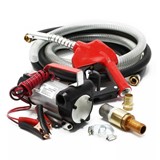

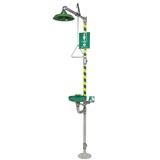
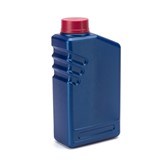




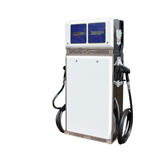

-160x160-state_article-rel-cat.jpg)
